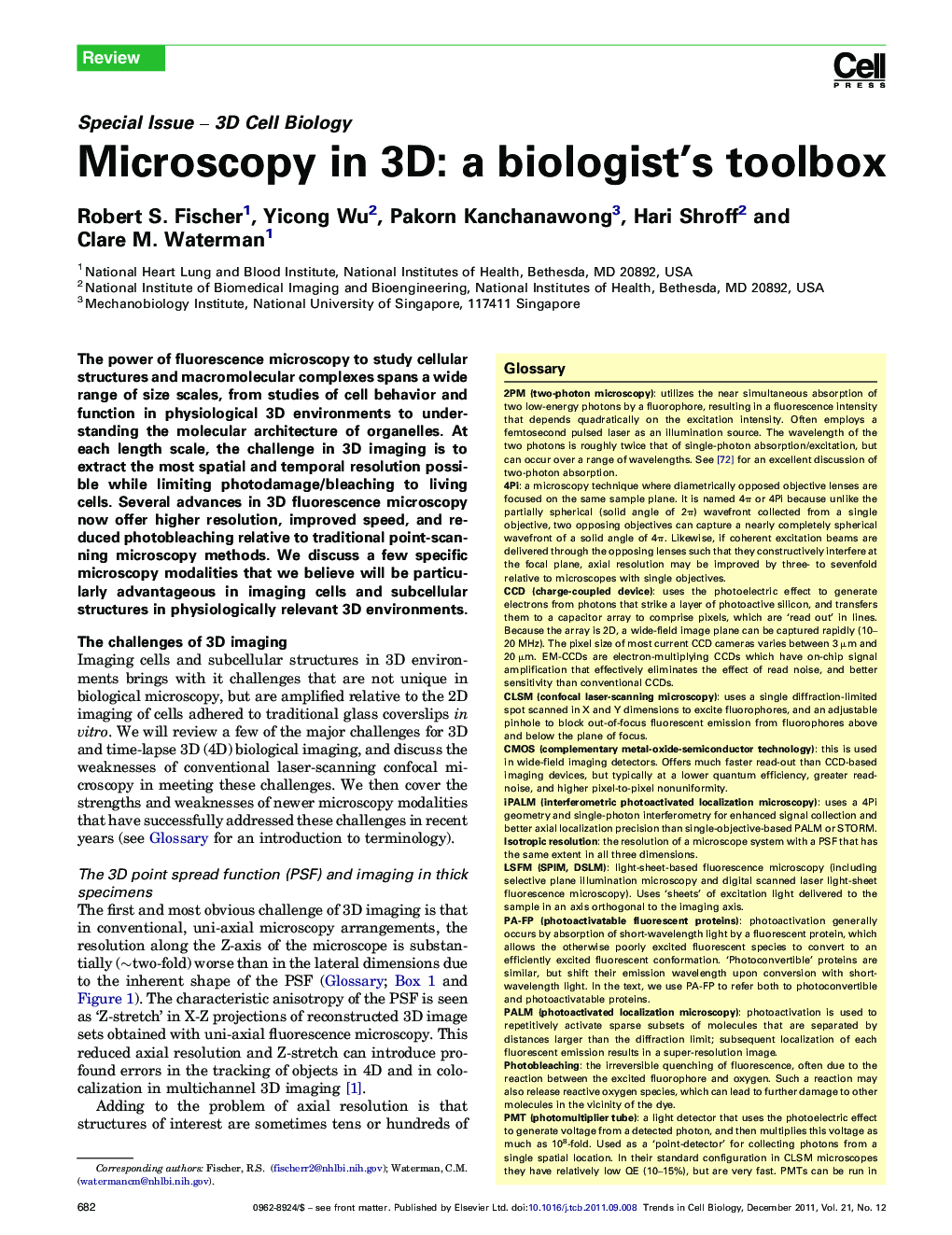| Article ID | Journal | Published Year | Pages | File Type |
|---|---|---|---|---|
| 2204662 | Trends in Cell Biology | 2011 | 10 Pages |
The power of fluorescence microscopy to study cellular structures and macromolecular complexes spans a wide range of size scales, from studies of cell behavior and function in physiological 3D environments to understanding the molecular architecture of organelles. At each length scale, the challenge in 3D imaging is to extract the most spatial and temporal resolution possible while limiting photodamage/bleaching to living cells. Several advances in 3D fluorescence microscopy now offer higher resolution, improved speed, and reduced photobleaching relative to traditional point-scanning microscopy methods. We discuss a few specific microscopy modalities that we believe will be particularly advantageous in imaging cells and subcellular structures in physiologically relevant 3D environments.
